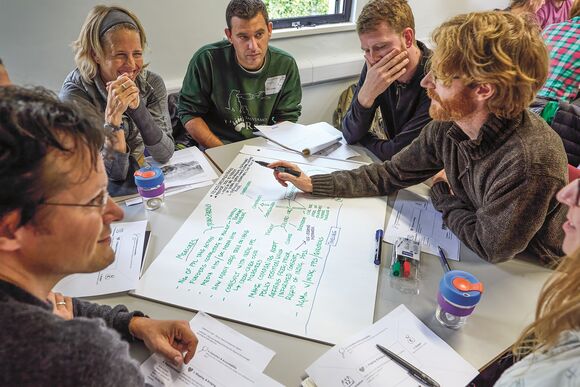
Tip #1 - Prioritize Relationships Between Group Members
A group accomplishes its task only when its individuals feel trust, safety, and understanding of who is in the collaboration and why.
In service of “getting things done,” lots of collaborations launch right into defining visions, goals, and plans of action before participants feel comfortable. As humans we need to know the values and motivations of the other people in a group before we trust them with our own ideas and perspectives. When collaborations emphasize action before building relationships, group dynamics can range from flat to contentious. Participants either hold their cards close to their chest or make assumptions about others, often leading to unproductive conflict and disagreement.
Regional watershed alliance, participant observation:
“We struggled, at first, on building trust, consensus, and governance. Eventually, we realized trust, and that’s when the coalition began building momentum and achieving success. No individual groups put their self-interest above the interests of the other groups.”
When trust is in place, individual or organizational needs can be held in balance with the interest of group opportunities and needs.
Actions to Build Relationships:
- During meetings, use creative introductions and icebreaker questions as a way for participants to share about themselves, their values, or their work.
- Create informal opportunities for the group members to get to know each other: social time, gathering for meals or receptions, or getting out for a tour or outing.
- Invite participants to share their secret superpowers that might benefit the work of the collaboration.
Want to read more of the Seven Tips for Collaboration? Sign up for our email list to get access!
